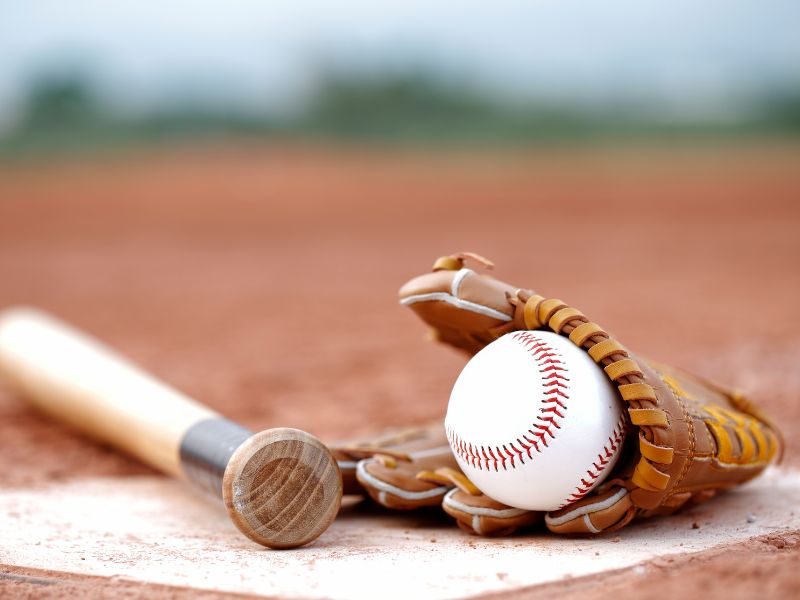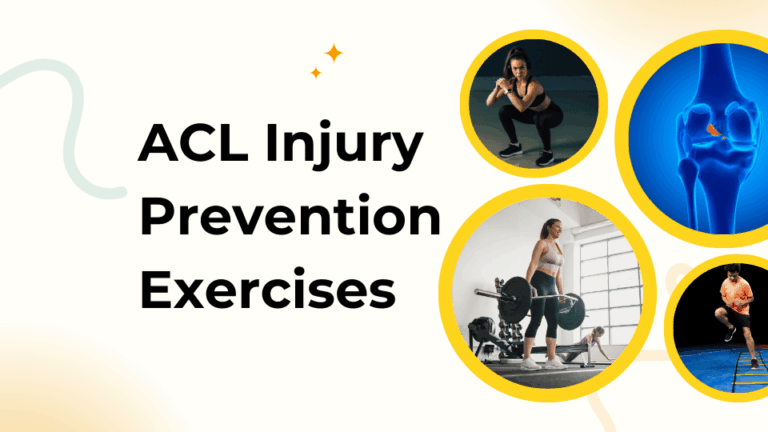Baseball requires an outstanding blend of speed, strength, agility, explosive power, flexibility, and endurance. With the rise of data-driven training, the expectations for aspiring and professional athletes have only increased. This comprehensive guide introduces a periodized, expert-designed baseball fitness plan with detailed lists, tables, statistics, and actionable routines that can transform any ballplayer’s performance and prevent injury.
Principles of Baseball Fitness
Baseball is uniquely multi-dimensional: a successful athlete must possess exceptional reaction time, rotational power (for hitting and throwing), sprint speed (for running bases), and total-body stability. The best baseball fitness plan is structured over the year with focused phases, mirroring the athletic demands of the game.
Explore more fitness content, the science of natural bile salts supplements, and debloat or re-energize with our evidence-backed 3-day detox diet.
Key Pillars of Training
- Strength & Power: Absolute and explosive strength for hitting, fielding, and throwing.
- Speed & Agility: Fast acceleration, sharp directional changes, and base-stealing ability.
- Mobility & Flexibility: Injury prevention and optimized athletic movement.
- Endurance: Sustained energy over a 9-inning game.
- Sport-Specific Skills: Rotational drills, arm care, and eye-hand coordination.
- Recovery & Nutrition: Fueling and restoring the body for peak performance.
Components of a Baseball Fitness Plan
A complete plan should cover strength, conditioning, flexibility, recovery, and nutrition. Below are the key elements.
1. Strength Training
Strength is the foundation of power in baseball. Players need strong legs, hips, and core muscles for explosive movement.
Focus areas:
- Lower Body: Squats, lunges, deadlifts.
- Upper Body: Pull-ups, rows, bench press, push-ups.
- Rotational Core: Russian twists, medicine ball throws, cable woodchoppers.
2. Conditioning
Unlike marathon running, baseball demands short bursts of high-intensity effort. Interval and sprint training are more effective than long steady-state cardio.
3. Flexibility and Mobility
Baseball requires dynamic flexibility for quick changes in direction and joint health, particularly in the shoulders and hips.
4. Recovery Strategies
Rest, hydration, and nutrition ensure players recover between games and training sessions.
5. Nutrition
A diet rich in lean protein, complex carbs, healthy fats, and hydration fuels performance.

Strength Training for Baseball Players
Lower Body Training
Strong legs power every movement in baseball—from sprinting to explosive jumps.
Recommended Exercises:
- Barbell Squats – 4 sets of 6 reps
- Bulgarian Split Squats – 3 sets of 8 reps each leg
- Deadlifts – 3 sets of 5 reps
- Box Jumps – 3 sets of 10 reps
Upper Body Training
Upper body strength improves throwing velocity and batting power.
Recommended Exercises:
- Bench Press – 3 sets of 6–8 reps
- Pull-Ups – 3 sets to failure
- Seated Rows – 3 sets of 10 reps
- Overhead Dumbbell Press – 3 sets of 10 reps
Core Training
A strong core stabilizes the body and supports rotational power.
Key Movements:
- Medicine Ball Rotational Throws – 4 sets of 12
- Hanging Leg Raises – 3 sets of 12
- Plank Variations – 3 sets of 1-minute holds
Conditioning and Agility Training
Conditioning is about being explosive while maintaining stamina for long games. Baseball players benefit from high-intensity interval training (HIIT).
Sprint Intervals
- 8 x 40-yard sprints with 30 seconds rest.
- 6 x 100-yard sprints with 60 seconds rest.
Agility Drills
- Cone Shuffle Drill – 5 rounds.
- Ladder Drills – 10 minutes.
- Zig-Zag Runs – 4 sets.
Endurance Conditioning
- Rowing machine or assault bike, 20 minutes at moderate intensity.
Phases of the Baseball Year
A strategic baseball fitness plan divides the year into clear phases to maximize adaptation and prevent burnout. Each phase has distinct priorities and sample workout structures.
| Phase | Key Focus | Typical Activities |
|---|---|---|
| Off-Season | Strength, hypertrophy, healing | Heavy lifting, core, movement screening |
| Pre-Season | Power, speed, skills | Plyometrics, explosive drills, field work |
| In-Season | Maintenance, recovery | Light lifts, arm care, mobility |
| Post-Season | Active recovery | Rest, light cardio, rehab, flexibility |
Off-Season: Building Strength and Size
Goal: Develop a strong foundation, correct imbalances, and enhance muscle mass.
Core Elements
- Heavy Compound Lifts: Squats, deadlifts, bench press, overhead press, pull-ups.
- Core Training: Planks, Russian twists, anti-rotation presses.
- Mobility & Flexibility: Dynamic stretching, foam rolling, yoga.
Sample Off-Season Weekly Split:
| Day | Workout Type | Key Focus Areas |
|---|---|---|
| Monday | Lower body strength | Squats, lunges, glutes, core |
| Tuesday | Upper body push/pull | Bench, row, pull-up, shoulders |
| Wednesday | Mobility/recovery | Yoga, foam roll, light cardio |
| Thursday | Power & Plyometrics | Medicine ball slams, box jumps |
| Friday | Full body strength | Deadlifts, press, rotation |
| Saturday | Field/running drills | Sprints, agility, base running |
| Sunday | Rest/recovery | Stretch, meal prep, light walk |
Pre-Season: Adding Power and Baseball-Specific Skills
As the season approaches, the baseball fitness plan shifts to movements that maximize on-field power and speed.
Key Tactics
- Plyometric Training: Box jumps, broad jumps, sprints, medicine ball tosses.
- Rotational & Sport-Specific Drills: Band-resisted swings, throws, agility ladders.
- Conditioning: Interval sprints, agility circuits for anaerobic stamina.
Useful Statistic:
Biomechanical studies reveal trunk rotation power is the biggest predictor of throwing velocity.
Efficiency tip: Plan your training nutrition and supplement support in advance. Read about supporting digestion and performance in our natural bile salts supplements article for optimal energy during explosive phases.
In-Season: Performance, Maintenance, and Recovery
Goal: Keep players strong and safe while minimizing fatigue and injury after games.
Weekly In-Season Plan Example
| Day | Focus | Purpose |
|---|---|---|
| Monday | Maintenance strength | Preserves muscle, keeps joints strong |
| Tuesday | Mobility & Arm Care | Prevents overuse injuries (shoulder/elbow) |
| Wednesday | Conditioning | Short sprints, agility, core engagement |
| Thursday | Game Simulation/Rest | Skills focus or additional recovery |
| Friday | Light Power or Upper Body | Fast twitch, keep edge sharp |
| Saturday | Game or Skill Practice | On-field focus |
| Sunday | Recovery/Review | Massage, flexibility, review tape |
Key In-Season Priorities:
- Taper training intensity—avoid heavy loads right before/after games.
- Emphasize shoulder health, scapular stability, and dynamic flexibility.
- Prioritize good sleep, hydration, and nutrition for sustained energy.
Essential Exercises for Baseball Athletes
Top 10 Gym/Field Exercises
- Pull-Ups: Upper back, grip, forearm, and core
- Sprint Starts: Acceleration and stealing bases
- Side Shuffles: Lateral speed and defensive moves
- Medicine Ball Swings: Rotational power
- Wrist Curls: Forearm and grip strength
- Dumbbell Romanian Deadlift: Posterior chain, hips
- Trap Bar Deadlifts: Strength, power, low back safety
- Push Press: Overhead strength, explosiveness
- Planks and Cable Anti-Rotations: Core stability
- Agility Ladders/Hurdle Drills: Foot speed, coordination
Efficiency tip:
Combine strength training with short intervals (HIIT or sprint bursts) to elevate cardiac capacity while reinforcing field-specific athleticism.
Baseball Nutrition: Fueling the Athlete
Proper nutrition is essential for tissue repair, energy, mental focus, and long-term results.
Key Guidelines
- Carbohydrates are the main energy source—especially on game days.
- Lean proteins repair muscles: chicken, fish, eggs, tofu, lentils.
- Healthy fats (avocado, olive oil, nuts) support joints and slow-digesting fuel.
- Micronutrients: Magnesium, potassium, and B-vitamins for recovery.
- Hydration is crucial during hot months and double-headers.
Want to refresh your body for the start of the season? Try a 3-day detox diet during the off-season to jumpstart your metabolism.
Injury Prevention and Athlete Longevity
Baseball places repetitive strain on the shoulders, elbows, lower back, hips, and hamstrings.
Main Risks & Preventative Strategies
- Shoulder/Elbow Strain: Focus on rotator cuff exercises, scapular stabilization, and avoid overuse.
- Hamstring/Quad Injuries: Dynamic stretching and eccentric strength work.
- Oblique/Low Back Strains: Core anti-rotation, flexibility, proper lifting technique.
- Hydration/Nutrition: Proper intake prevents muscle cramping and fatigue-related injuries.
Traditional vs. Baseball-Specific Training
| Element | Traditional Program | Baseball-Specific Program |
|---|---|---|
| Squats/Deadlifts | Linear, sagittal-plane | Added rotation, multi-plane |
| Core | Sit-ups, planks | Anti-rotation, explosive swings |
| Conditioning | Jogging, cycling | Intervals, sprints, agility |
| Flexibility | Basic stretching | Dynamic, rotational mobility |
Mindset, Recovery, and Self-Care
Current research shows that athletic performance is not just physical—it’s mental and emotional resilience, too.
Recovery Strategies
- Sleep: 8–10 hours, especially during tournaments or travel periods.
- Active Recovery: Foam rolling, massage, light swimming, yoga.
- Mental Training: Visualization, pre-game routines, and performance journaling.
- Supplements: Collagen, magnesium, and natural remedies (when needed).
For further reading on performance wellness, access our fitness resources and explore advanced natural strategies.

Baseball Fitness and Athletic Development
- According to a 2025 survey, 89% of competitive baseball players supplement field practice with gym-based strength training at least 3x per week.
- Players who follow a periodized fitness plan demonstrate a 22% reduction in in-season injuries compared to those with unstructured routines.
- Trunk rotation power correlates with up to 12% gains in throwing velocity among elite pitchers.
- MLB data shows the fastest base stealers have vertical jump scores above the 80th percentile in all pro athletes.
- Sleep and nutrition optimization can improve recovery and prevent slumps for up to two-thirds of athletes during the high-pressure tournament season.
Complete Sample 4-Week Baseball Fitness Plan
| Week | Strength Focus | Power/Cardio | Flexibility/Mobility | Sport Skills |
|---|---|---|---|---|
| 1 | Heavy compound | Sprint circuits | Dynamic stretch, foam roll | Batting practice |
| 2 | Upper/Lower splits | Plyometrics, HIIT | Yoga, shoulder mobility | Throwing, fielding |
| 3 | Hypertrophy reps | Agility ladder, sprints | Deep tissue massage | Strategic review |
| 4 | Maintenance | Med ball throws | Dynamic and static stretching | Game simulation/skills |
Note: Individualize reps/sets/rest per athlete’s needs, season timing, and recovery status.
Monitoring Progress and Adapting Your Baseball Fitness Plan
Track these essential metrics:
- Increases in 1RM (squat, deadlift, bench)
- Sprint and base running times
- Improvements in vertical jump and rotational power (medicine ball throws)
- Game performance stats (bat speed, throw velocity, accuracy)
- Flexibility and movement screen results
Tips for Success
- Adjust intensity and volume based on season demands and fatigue.
- Prioritize injury prevention over maximal training in-season.
- Collaborate with coaches, trainers, and nutritionists for a holistic approach.
- Don’t ignore mental and emotional rest, especially post-competition.
Final Thoughts
Elevate Your Game with the Right Baseball Fitness Plan
The best baseball athletes combine intelligent training, sport-specific fitness, nutrition, mental toughness, and recovery. This baseball fitness plan template supports athletes at every level—from Little League to the pros. Tailor the routines, track your stats, and make athletic longevity your competitive advantage.
Adopt these core principles, remain adaptable, and enjoy the journey from pre-season to championship glory!




